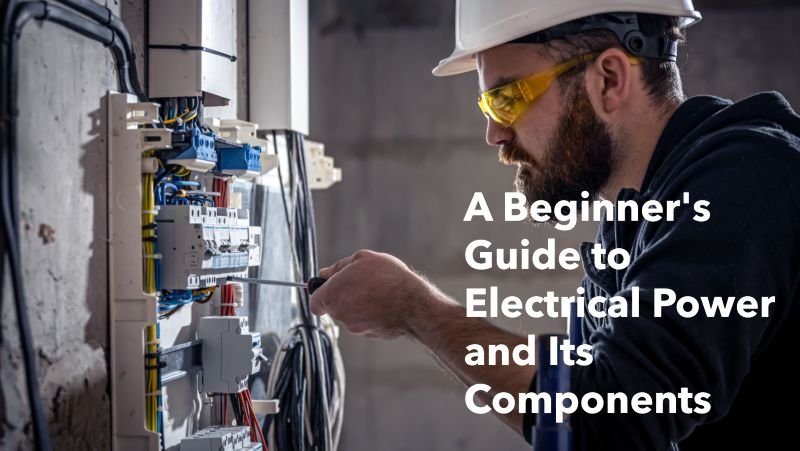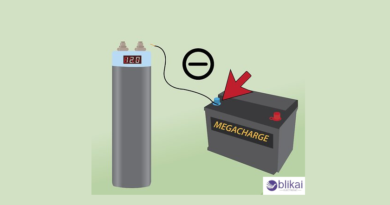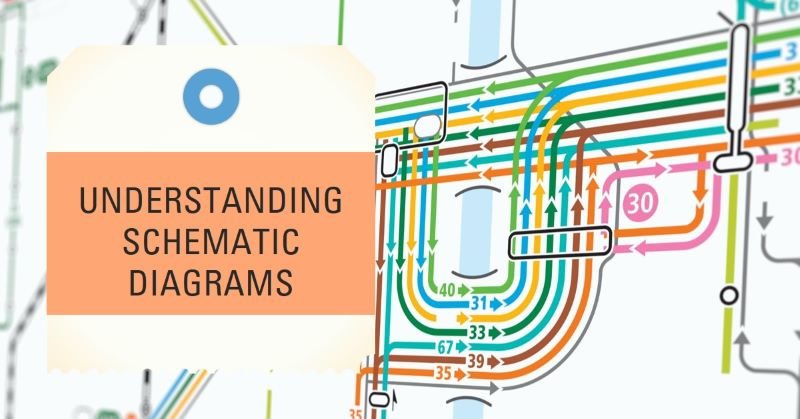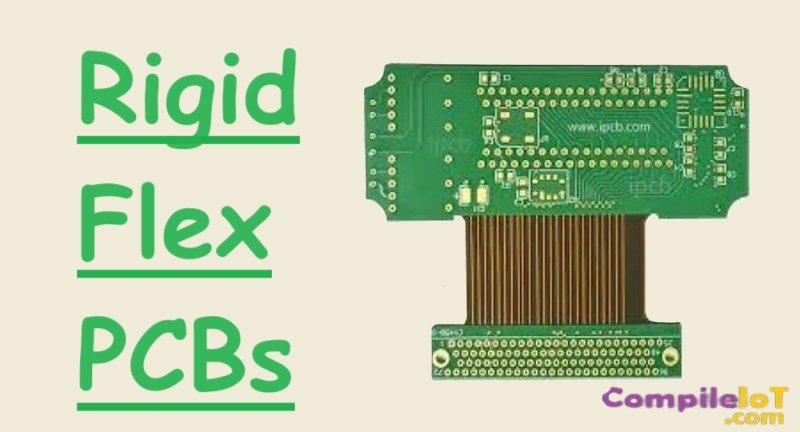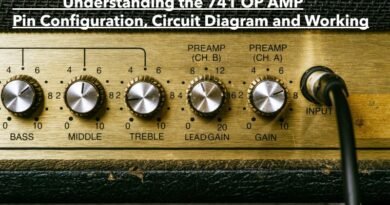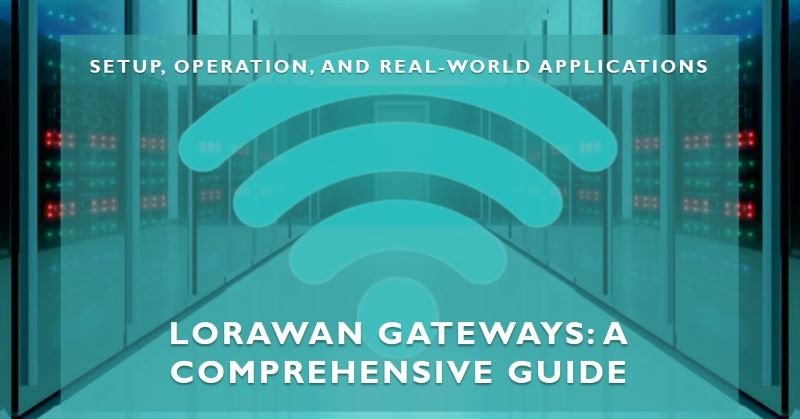A Beginner’s Guide to Electrical Power and Its Components
Electrical power is a fundamental concept in physics and engineering, defining the rate at which energy is transferred or converted in an electrical circuit. It forms the backbone of modern technology, powering everything from household appliances to industrial machinery. This article explores how electrical power is intrinsically linked to current, voltage, joules, and coulombs, providing a clear understanding of these interrelated components.
Basics of Electrical Power
Electrical power is the rate at which electrical energy is transferred or consumed in a circuit. Mathematically, it is expressed as: where:
- P is power (in Watts),
- W is energy or work (in Joules),
- t is time (in seconds).
Unit of Measurement (Watt)
The standard unit of electrical power is the Watt (W), named after James Watt. One watt is equivalent to one joule of energy transferred per second: This unit helps quantify how much energy an electrical device uses or produces over time.
Importance of Power in Electrical Circuits
Understanding electrical power is essential for designing efficient systems. It determines the energy consumption of devices and helps in optimizing circuits for performance, safety, and cost-effectiveness. Engineers use power calculations to select components such as resistors, capacitors, and transformers that meet specific energy requirements.
Understanding the Components
Current
- Definition: Current is the flow of electric charge through a conductor. It represents the movement of electrons in a circuit.
- Unit: The unit of current is the Ampere (A).
- Relation to Coulomb and Time: Current is directly proportional to the amount of charge passing through a point in the circuit over time, expressed as: where:
- I is current (in Amperes),
- Q is charge (in Coulombs),
- t is time (in seconds).
Voltage
- Definition: Voltage is the electrical potential difference between two points in a circuit. It measures the energy per unit charge that drives the flow of current.
- Unit: The unit of voltage is the Volt (V).
- Relation to Work Done and Charge: Voltage is calculated as the work done to move a charge between two points, given by: where:
- V is voltage (in Volts),
- W is work done or energy (in Joules),
- Q is charge (in Coulombs).
Joule
- Definition: The Joule (J) is the unit of energy or work in the International System of Units (SI). It is defined as the work done when a force of one newton moves an object one meter in the direction of the force.
- Role in Electrical Power: Joules quantify the energy transferred or consumed in a circuit. Electrical power, measured in watts, describes how quickly this energy is used.
- Examples of Joule in Practical Scenarios:
- A 60-watt light bulb consumes 60 joules of energy per second.
- Charging a smartphone involves transferring thousands of joules of energy into the battery.
Coulomb
- Definition: The Coulomb (C) is the unit of electric charge in the SI system. One coulomb equals the charge of approximately 6.242 × 10¹⁸ electrons.
- Relation to Electrons and the Flow of Current: Current is the flow of electric charge, and the coulomb quantifies this charge. For example, a current of one ampere represents one coulomb of charge flowing through a point in one second.
- Importance in Quantifying Electric Charge: Coulombs provide a measure to calculate the total charge transferred in a circuit, helping to determine energy usage and design parameters. For instance, understanding the charge in coulombs is critical for battery design and capacity analysis.
Mathematical Relationships
Power in Terms of Voltage and Current
- Formula: The relationship between power, voltage, and current is expressed as: where:
- P is power (in Watts),
- V is voltage (in Volts),
- I is current (in Amperes).
- Explanation with Examples: For instance, if a device operates at 12 volts and draws a current of 2 amperes, the power consumption is: This means the device uses 24 joules of energy per second.
Power in Terms of Joules and Time
- Formula: Power can also be expressed as the rate of energy consumption over time: where:
- P is power (in Watts),
- W is energy (in Joules),
- t is time (in seconds).
- Connection Between Energy Consumption and Power: This formula highlights how quickly energy is used. For example, if a motor consumes 3000 joules of energy in 10 seconds, its power output is: This indicates the motor operates at 300 watts.
Relation to Coulombs
- Charge Flow in Terms of Power: The relationship between charge flow and power can be understood using the formula for current: where:
- Q is charge (in Coulombs),
- I is current (in Amperes),
- t is time (in seconds).
- How Coulombs Fit into the Power Equations: Combining this with , we see that charge movement under a potential difference determines the energy transfer. For instance, in a circuit with a current of 3 amperes running for 5 seconds, the total charge transferred is: This charge, when multiplied by voltage, helps compute energy used.
Real-World Applications
Examples of Power Usage in Electrical Appliances
- A 100-watt light bulb converts 100 joules of electrical energy into light and heat every second.
- A microwave oven rated at 1200 watts consumes 1200 joules of energy per second to heat food.
Role of Voltage and Current in Designing Circuits
- Engineers calculate voltage and current requirements to select components like resistors, capacitors, and transistors that can handle the expected power.
- High-power devices often require higher voltage or current, necessitating robust designs to ensure safety and efficiency.
Conclusion
In conclusion, Understanding the relationships among current, voltage, joules, and coulombs provides a comprehensive view of electrical power. These concepts form the basis for designing and analyzing electrical systems, from small household devices to large industrial machinery. Mastering these principles enables efficient energy use and innovative technological advancements.
FAQs
Q1: What is the difference between power and energy?
Energy (measured in joules) is the capacity to perform work, while power (measured in watts) is the rate at which energy is used or transferred.
Q2: Why is voltage important in power calculations?
Voltage drives the flow of current, directly affecting power output according to the formula .
Q3: How can I calculate the power usage of an appliance?
Multiply the voltage (in volts) by the current (in amperes) to determine power (in watts): .
Q4: What is the role of coulombs in electricity?
Coulombs quantify electric charge, helping to measure the total charge flow in a circuit over time.
Q5: Can power be negative?
Yes, negative power indicates energy is being returned to the source, such as during regenerative braking in electric vehicles.
